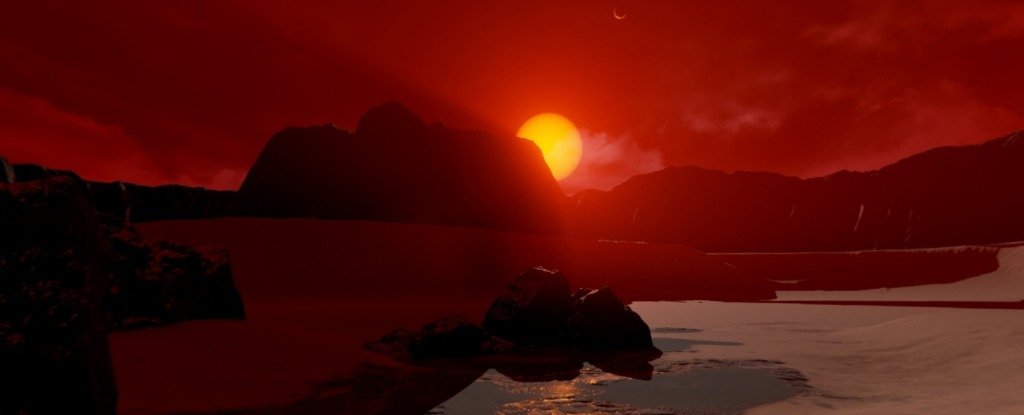Perhaps the most exciting exoplanet discovery to date was announced earlier this year when researchers using multiple telescopes confirmed that there are seven Earth-sized planets orbiting a star just 40 light-years away.
Planetary scientists believed these were rocky worlds with atmospheres, possibly capable of supporting liquid water, especially the three planets that orbit in the habitable zone where surface temperatures could hover between 0 and 100 degrees Celsius.
Now, Hubble has spotted possible signs of water. An international team of scientists, led by Swiss astronomer Vincent Bourrier of the Observatoire de l'Université de Genève, used the space telescope to study the amount of ultraviolet light hitting the planets and measure the amount of hydrogen these worlds are venting into space. The results suggest the innermost planets, TRAPPIST-1b and TRAPPIST-1c could have lost as much as 20 Earth-oceans-worth of water in the last eight billion years. The outer planets, however, including e, f, and g, which orbit in the habitable zone, would have lost less water, and could still retain vast stores of liquid water on the surface.
Ultraviolet light breaks up molecules in the atmosphere here on Earth as well as on other planets, a process scientists call photo dissociation. "Ultraviolet radiation is an important factor in the atmospheric evolution of planets," says Bourrier. "As in our own atmosphere, where ultraviolet sunlight breaks molecules apart, ultraviolet starlight can break water vapor in the atmospheres of exoplanets into hydrogen and oxygen."
Low-energy ultraviolet light breaks water vapor molecules apart, while higher energy radiation such as X-rays heat the atmosphere and because the constituent parts of water—hydrogen and oxygen—to escape out into space. Hydrogen, the lightest element, is particularly prone to this process and seeps out of a planet's atmosphere in more abundance than anything else.
The researchers used Hubble to measure the amount of ambient hydrogen floating around the TRAPPIST-1 planets as well as the intensity of ultraviolet light coming from the host star, an ultracool dwarf star. The amount of ultraviolet radiation coming from TRAPPIST-1 suggests the inner planets could have lost an enormous amount of water over the eons, something that is supported by the abundant hydrogen surrounding the planets—a possible indicator of water vapor. Most importantly, the radiation hitting the outer planets and the amount of hydrogen surrounding them suggests these worlds, similar to Earth in many ways, might still retain atmospheric water vapor and even liquid water on the surface.
Whether or not these planets could actually support life is still an open question. First of all, the observations from Hubble are not conclusive, and further observations from other observatories as well as computer simulations are required to support or dispute the possibility of water on the TRAPPIST-1 planets.
"While our results suggest that the outer planets are the best candidates to search for water with the upcoming James Webb Space Telescope, they also highlight the need for theoretical studies and complementary observations at all wavelengths to determine the nature of the TRAPPIST-1 planets and their potential habitability," says Bourrier.
Source: Hubble Space Telescope

